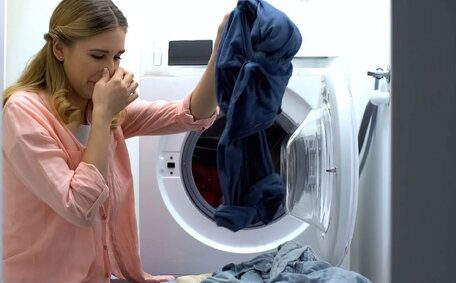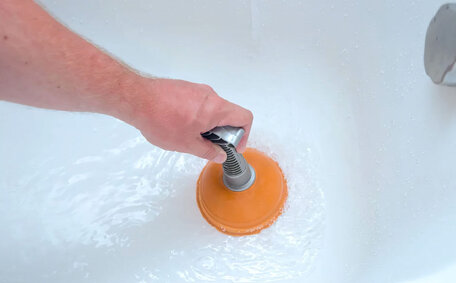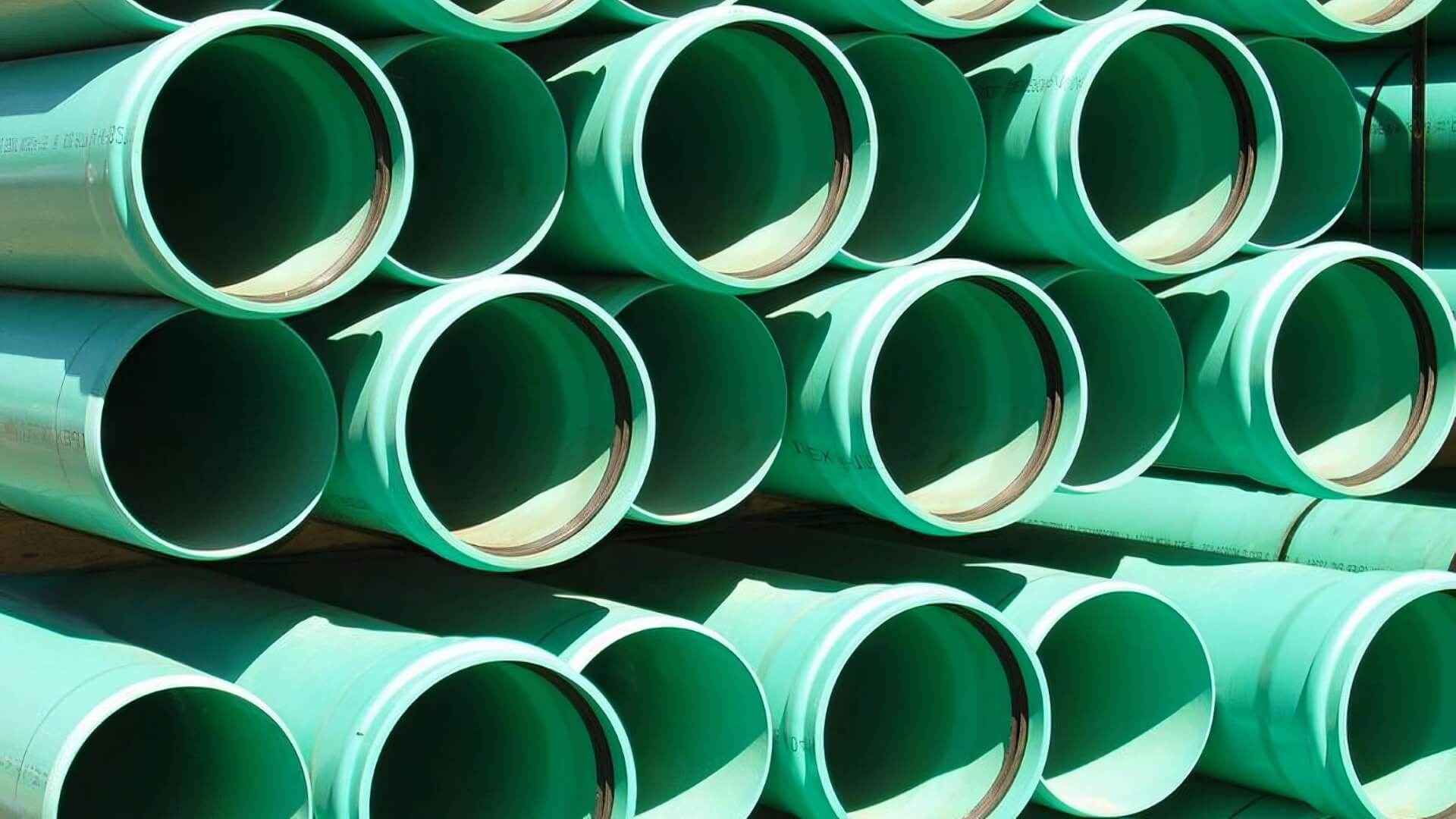What causes low water pressure in homes?
Numerous factors can lead to low water pressure in your home, including:
- Blocked or clogged drain pipes and fixtures. Scale buildup, rust, sediment and other debris can restrict water flow through pipes. Faucet aerators and shower heads are also prone to clogging over time.
- Issues with water supply valves. Malfunctioning pressure regulator valves or shutoff valves can interfere with standard water pressure, so troubleshooting steps should be reviewed.
- Undersized pipes. If the home’s supply lines are too narrow, they may struggle to deliver adequate water volume and pressure, especially during peak usage times.
- Worn out water heater. An ageing or failing hot water system may lead to low hot water pressure as it may not sufficiently heat water or keep up with demand.
- Storm water systems and high water elevation situations. Homes at higher elevations often experience lower water pressure due to gravity and distance from the water source.
- Municipal water supply issues. Drops in community water pressure from the utility can translate to reduced pressure at the tap.
A skilled Coffs Harbour plumber can identify the root causes of low water pressure and recommend effective solutions. Situations may warrant replacing worn pipes and valves or upgrading to a new hot water system to improve efficiency and pressure.
How pipe corrosion can reduce water flow
Fortunately, advancements in pipe relining technology now ensure that pipe relining can effectively address common issues like pipe corrosion that curtail water flow and pressure in homes. As metal or galvanised pipes age, scale builds up along the interior walls of the pipe, leading to rust and necessitating a pipe relining solution. Over time, this corrosion debris accumulates and narrows the pipe diameter, restricting water flow.
Some signs of pipe corrosion include:
- Decreased water pressure from faucets and showers
- Discoloured water or metallic tastes
- Frequent clogging of faucet aerators
- Leaks needing drain repair often emerge in rusted sections of broken pipes
If left unchecked, corrosion will eventually lead to pinhole leaks, cracks or complete rupture of the compromised pipes. Drain pipe relining, a trenchless technique, can repair corroded pipes to improve water flow without fully replacing the plumbing system.
During relining, technicians ensure materials used will extend pipe longevity, with epoxy coatings sealing leaks for smoother water flow.
A quality relining company will offer a CCTV drain inspection and provide an epoxy liner that creates a ‘pipe within a pipe’ for your home’s plumbing system, fortifying the strength beyond its predecessors and boosting the lifespan of corroded pipes.
Apart from corrosion fixes, relining pipe adeptly handles sewer pipe complications such as tree roots intrusion, fractures, and collapsed joints.
Pipe relining can restore hot water pressure, prevent further pipe deterioration, and avoid potential water damage to walls or foundations. For a spectrum of pipe problems depleting your water flow, you would definitely call them again for pipe relining as the lasting fix.
Diagnosing low water pressure problems
Homeowners can perform initial checks before consulting a professional Eastwood plumber for low water pressure issues:
- Test water flow at several faucets throughout the home, both upper and lower levels if applicable. This determines if pressure loss is isolated or house-wide.
- Inspect exposed pipes and supply lines for corrosion, leaks, kinks or blockages. Signs of rust, dampness or water stains on walls or ceilings may indicate concealed leaks.
- Inspect for a blocked drain and fixtures like faucet aerators and shower heads which can be very helpful to identify restrictions in flow.
- Examine where the main water supply pipe enters the home for damage and measure incoming pressure using a water pressure gauge.
- Check if the pressure is lower during high-demand times or when multiple fixtures run simultaneously.
Do-it-yourself testing offers initial insights, but an Eastwood plumber, with expertise in pipe relining, is required for an accurate diagnosis and repair.
They may perform a detailed CCTV inspection using underground cameras to effectively examine buried pipes. Pressure testing is an effective method for identifying leaks not visible on the surface. A comprehensive professional assessment is crucial to ascertain the cause and get your low pressure issues promptly remedied.
This determines if pressure loss is isolated or house-wide.Inspect exposed pipes and supply lines for corrosion, leaks, kinks or blockages. Signs of rust, dampness or water stains on walls or ceilings may indicate concealed leaks.When professional plumbing repairs are needed
Hiring our skilled team for plumbing services is recommended to fix issues like blocked drains causing consistent low water pressure despite basic troubleshooting. Although DIY remedies like unclogging fixtures may help temporarily, a licenced plumber’s expertise in pipe relining ensures a definitive and lasting solution.
Signs that professional assistance is required include:
- Pressure problems throughout the entire house
- Gradual, persistent loss of water pressure
- Leaking or severely corroded pipes
- Major drops in pressure during peak water usage times
- The inability to identify or resolve the cause of low pressure
Eastwood’s licenced plumbers utilise comprehensive drain inspections and leak detection tools, ensuring quality workmanship that lends itself to recommendations. By having pipes replaced to enhance unsuitable plumbing components, they can restore your water pressure to optimal performance.
Tackling your low water pressure issues, trenchless pipe relining emerges as a distinctly cost effective approach compared to complete pipe replacement, restoring flow and pressure without considerable demolition. The quality of service was very reasonable at Eastwood Plumbing, delivering the best pipe relining solution your home needs to resolve low water pressure concerns.
Can pipe relining resolve low pressure issues?
For effective solutions to low water pressure issues caused by damage or corrosion, homeowners can trust Sydney’s leading pipe relining services. The process can save the integrity of your piping by inserting a flexible epoxy resin lining into the existing pipe, forming a smooth, seamless barrier upon hardening.
There are several benefits to plumbing pipe relining that specifically address low pressure issues:
- Pipe relining is recommended for its cost savings, as it reinstates flow and smooths internal corrosion, holes, cracks, and obstructions that hinder water movement.
- The epoxy lining reduces friction, allowing water to flow freely and regain normal pressure.
- Relining restores structural integrity and provides durable reinforcement for older pipes at risk of breaking.
- Leaks can be managed without extensive repairs, hence preventing water loss and pressure drops once the area is cleaned up after the work is completed.
- Relining involves no excavation, ensuring minimal disruption to your property.
Pipe relining far surpasses traditional methods in saving time, as our company executes it and resources, as it’s a faster, cleaner, and more cost-effective option than traditional pipe replacement.
For low pressure issues, Eastwood Plumbing can evaluate and customise the relining solution to match your pipe conditions. Homeowners are very happy as this trenchless method often succeeds where simple DIY fixes fail, providing a permanent resolution to restore optimal water pressure throughout your home.
Understanding the pipe relining process
Pipe relining efficiently restores damaged plumbing without excavation or full replacement. Key stages include:
- Inspection - A CCTV camera is fed through the pipe to assess damage and determine if relining is suitable. The footage helps tailor the liner to match your pipe size and layout.
- Cleaning - High pressure water jets scour the pipe walls, clearing out old scale, rust and debris to prepare the surface for the epoxy liner.
- Resin installation - A structural grade epoxy resin liner is saturated in the desired thickness and pulled into the damaged pipe through an access point like a drain or vent stack. It bonds tightly to the old pipe wall.
- Curing - Once positioned, the resin liner is cured by circulating hot water or steam to harden it. Temperature is carefully controlled to achieve optimal strength.
The completed relining forms a barrier within the old pipe, enhancing structural integrity, preventing leaks, and improving water flow and pressure. With over a decade of pipe relining experience, our team at Eastwood Plumbing did a great job delivering enduring results without the disruption and cost associated with traditional pipe replacement methods.
Pipe relining vs. traditional replacement
Cost comparison
For property owners, pipe relining often presents a more cost-effective solution than complete pipe replacement.
It also lessens your property damage considerably, whereas carving trenches through walls and floors for pipe substitution results in far less budget-friendly repair costs.
Time comparison
The relining process is faster than pipe replacement and is often completed within 1-3 days, ensuring minimal disruption and no major demolition.
Replacing pipes can drag on for weeks or months, as walls and floors are torn apart to access and remove old pipes before the new system is installed.
Environmental impact
With cutting-edge relining technology, pipe relining reduces site waste when compared to traditional replacement methods. Relining eliminates soil disposal, landfill waste, and reduces air and noise pollution from construction equipment as no excavation is required. Relining also conserves water as pipes remain operational during the process, whereas mains water supply must be shut off for pipe replacement projects.
When to choose pipe relining
Pipe relining is an ideal solution for a variety of plumbing issues in Eastwood, especially when full replacement is not necessary.
Extensive corrosion damage
For pipes that are corroded along large sections or full lengths, relining provides reinforced structural stability and prevents further corrosion and leaks. Replacement is unnecessary if the core pipe layout does not require altering.
Inaccessible pipes
When pipes are in enclosed walls, under floors or beneath landscaped gardens, the excavation needed for replacement causes massive property damage. Relining provides trenchless access via small access points.
Root intrusion
Infiltration of tree root intrusion and cracks in the underground sewer line are effectively managed with relining. The epoxy coating seals off any root breaches and strengthens the existing pipework.
Low water pressure
For drainage systems affected by pressure issues caused by internal corrosion and buildup, relining removes friction and blockages to renew water flow and pressure recovery.
Cost savings
Compared to full replacement, relining costs roughly 75% less per metre of pipeline while still lasting for decades. It avoids excavation, new pipe, and repair expenses.
Learn more about our pipe relining services at Eastwood Plumbing, and let our team help determine if relining offers the most suitable and cost-effective solution for your situation. Our expertise delivers pipe restoration without major demolition or replacement costs.
Pipe relining is an ideal solution for a variety of plumbing issues in Eastwood, especially when full replacement is nrovides reinforced structural stability and prevents further corrosion and leaks.
Maintacan help identify potential plumbing issues early on.
Use a home water pressure gauge to test pressure weekly at several fixtures. Take note if pressure drops below 45 psi, as this often indicates developing system issues needing attention.
Upgrade old pipes proactively
Rather than waiting for leaks or corrosion to occur, consider proactive pipe relining to reinforce ageing pipework. This maintains optimal pressure and flow throughout the plumbing system.
Insulate water pipes
Insulating your hot and cold water systems helps maintain optimal pressure by reducing heat loss and friction. Contact Eastwood Plumbing if you need assistance insulating your pipes.
By implementing these preventive measures, Sydney homeowners can safeguard their plumbing systems through pipe relining against pressure loss and enjoy consistent water pressure for years to come.
Consider installing a whole home leak detection system to identify leaks promptly.






